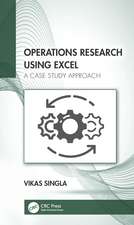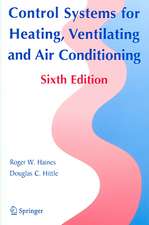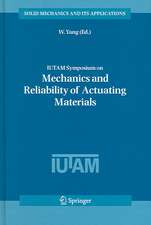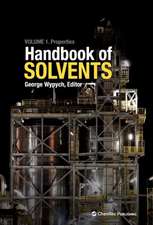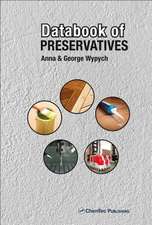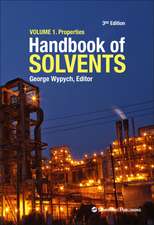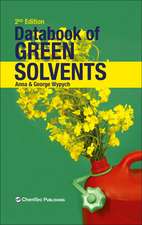Databook of Rheological Additives
Autor Anna Wypych, George Wypychen Limba Engleză Hardback – 17 mar 2022
General Information: name, CAS #, EC #, IUPAC name, common name, common synonyms, acronym, biobased, cellulose functionality, charge, degree of substitution, empirical formula, chemical structure, molecular mass, RTECS number, chemical category, product class, product composition, moisture content, and solids content.
Physical Properties: state, odor, color, bulk density, density, specific gravity, relative density, boiling point, melting point, pour point, decomposition temperature, glass transition temperature, refractive index, vapor pressure, vapor density, volume resistivity, relative permittivity, ash content, pH, viscosity, rheological behavior, absolute viscosity, surface tension, hydration time, solubility in solvents, solubility in water, the heat of combustion, the heat of decomposition, specific heat, thermal conductivity, Henry’s law constant, particle size, and volatility.
Health & Safety: NFPA classification, HMIS classification, OSHA hazard class, UN Risk phrases, UN Safety phrases, UN/NA class, DOT class, ADR/RIC class, ICAO/IATA class, IMDG class, packaging group, shipping name, food approvals, autoignition temperature, self-accelerating decomposition temperature, flash point, TLV ACGIH, NIOSH and OSHA, maximum exposure concentration IDLH, animal testing oral-rat, rabbit-dermal, mouse-oral, guinea pig-dermal, rat-dermal, rat-inhalation, mouse-inhalation, ingestion, skin irritation, eye irritation, inhalation, first aid eye, skin, and inhalation, carcinogenicity IARC, NTP, OSHA, ACGIH, and mutagenicity.
Ecological Properties: biological oxygen demand, chemical oxygen demand, theoretical oxygen demand, biodegradation probability, aquatic toxicity algae, Rainbow trout, Sheepshead minnow, Fathead minnow, and Daphnia magna, and partition coefficient.
Use & Performance: manufacturer, product feature, recommended for polymers, recommended for products, outstanding properties, compatibility, limitations, a typical reason for use, processing methods, the concentration used, storage temperature, and food approval.
- Provides readers with information on over 300 organic and inorganic additives, presented in individual tables tor each product
- Data featured are divided into five groups: General Information, Physical Properties, Health and Safety, Ecological Properties, and Use & Performance Information highlighted for each additive includes name/common name, chemical structure, state, odor, color, boiling/melting points, rheological behavior, OSHA hazard class, ingestion, skin/eye irritation, first aid, carcinogenicity, biodegradation probability, manufacturer, product feature, recommended for polymers, recommended for products, outstanding properties, compatibility, limitations, a typical reason for use, processing methods, storage temperature, and food approval
Preț: 1280.11 lei
Preț vechi: 1863.80 lei
-31% Nou
Puncte Express: 1920
Preț estimativ în valută:
244.97€ • 254.21$ • 204.76£
244.97€ • 254.21$ • 204.76£
Carte tipărită la comandă
Livrare economică 10-24 martie
Preluare comenzi: 021 569.72.76
Specificații
ISBN-13: 9781927885918
ISBN-10: 1927885914
Pagini: 600
Ilustrații: Approx. 100 illustrations
Dimensiuni: 152 x 229 mm
Greutate: 1.01 kg
Editura: ELSEVIER SCIENCE
ISBN-10: 1927885914
Pagini: 600
Ilustrații: Approx. 100 illustrations
Dimensiuni: 152 x 229 mm
Greutate: 1.01 kg
Editura: ELSEVIER SCIENCE
Public țintă
Academic researchers, R&D, production chemists and engineers, industrial hygienists, students; The book was designed with the following industries specifically in mind: coatings and paints; adhesives and sealants; cosmetics; household products; pharmaceuticals; agriculture and moreCuprins
1. General Information2. Physical Properties3. Health & Safety4. Ecological Properties5. Use & Performance


